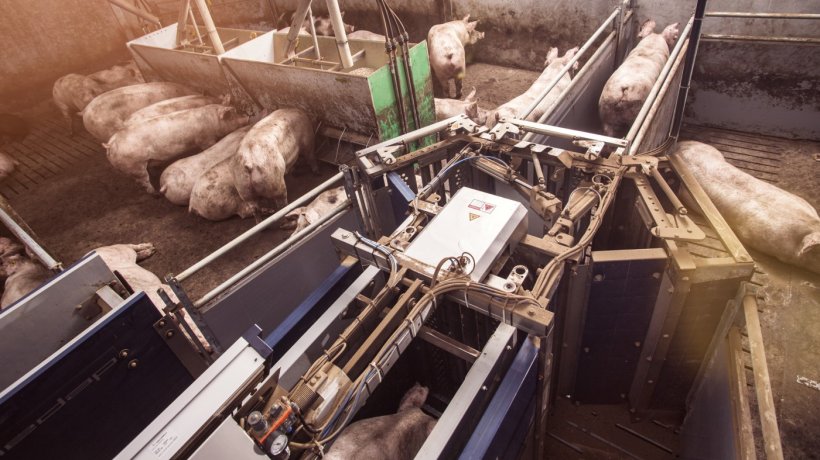 The U.S. Department of Agriculture estimates that 2020 will set another pork production record at 28.4 billion pounds, but estimated costs per live hundredweight are expected to follow suit. To drive return on investment (ROI), producers must find efficiency, maintain animal health and contain costs. Using automated sorting scales for finishing pigs can help.
The U.S. Department of Agriculture estimates that 2020 will set another pork production record at 28.4 billion pounds, but estimated costs per live hundredweight are expected to follow suit. To drive return on investment (ROI), producers must find efficiency, maintain animal health and contain costs. Using automated sorting scales for finishing pigs can help.
“Profitability requires getting hogs to market weight as efficiently as possible,” says Jeff Morten, U.S. sales account manager at Nedap Livestock Management. “Automated sorting weighs animals before feeding and routes pigs to the appropriate diet for their growth curve. Plus, automation can make day-by-day livestock management more efficient beyond delivering the right diet.”

Automated sorting scales can deliver efficiency in the following areas:
Detect animal health challenges faster
Influenza and other viruses can cripple grow-finish operations. Influenza A virus can cost $3.23 per head when you factor in losses in average daily gain (ADG), culling and mortality. In fact, it can take 10-15 days longer for sick market hogs to reach harvest body weight.
Automated sorting can mitigate the damaging effects of influenza and other viruses through early detection and intervention. The system dashboard generates alerts when feed intake drops, indicating there could be a health issue.
“The system can mark individual pigs that are growing too slow, which can be one of the first signs of illness, with paint. Lots of marked pigs can be an early sign of a pen-wide health issue that requires intervention.”
Pinpoint feed quality issues
Weather-delayed spring plantings, crop damage and variable crop maturity have contributed to elevated risk for mycotoxins, including aflatoxin. Market hogs are especially susceptible to aflatoxicosis, so feed quality monitoring is important.
Automated sorting can detect signs of mycotoxin exposure through feed, including reduced feed intake. With actionable animal growth data, you can conduct feed tests when intake drops to identify any potential issues before they grow into larger problems.
Root out variable growth rates
As average litter size continues to grow, so does growth rate variation. Larger litter sizes produce more variable birth weights and, subsequently, more variable growth rates. Not accounting for variation in growth rates can lead to market penalties or added expenses from over-conditioning heavy pigs.
Automated sorting can help. You can separate the heaviest and lightest pigs within a group to evaluate health or environmental factors contributing to growth weight variation. Low-growth pigs can be sorted and fed a different diet than high-growth pigs. You don’t have to “eyeball” which pigs look heavy and which look light. Automated sorting also saves time needed to manually sort animals.
More efficient business planning
Imagine knowing when hogs will be ready for market weeks in advance. Automated sorting helps accurately project finish dates based on growth rates, thereby improving business planning capabilities.
“Producers can even give packers the ability to tap into system software to help plan market delivery,” says Jeff. “Then, both the producer and the packer know how many animals will be headed to market in the coming weeks.”
By promoting management efficiencies that lower costs and improve pig performance, automated weighing and sorting can improve ROI as your farm grows.
January 7, 2020 - Nedap Livestock Management





